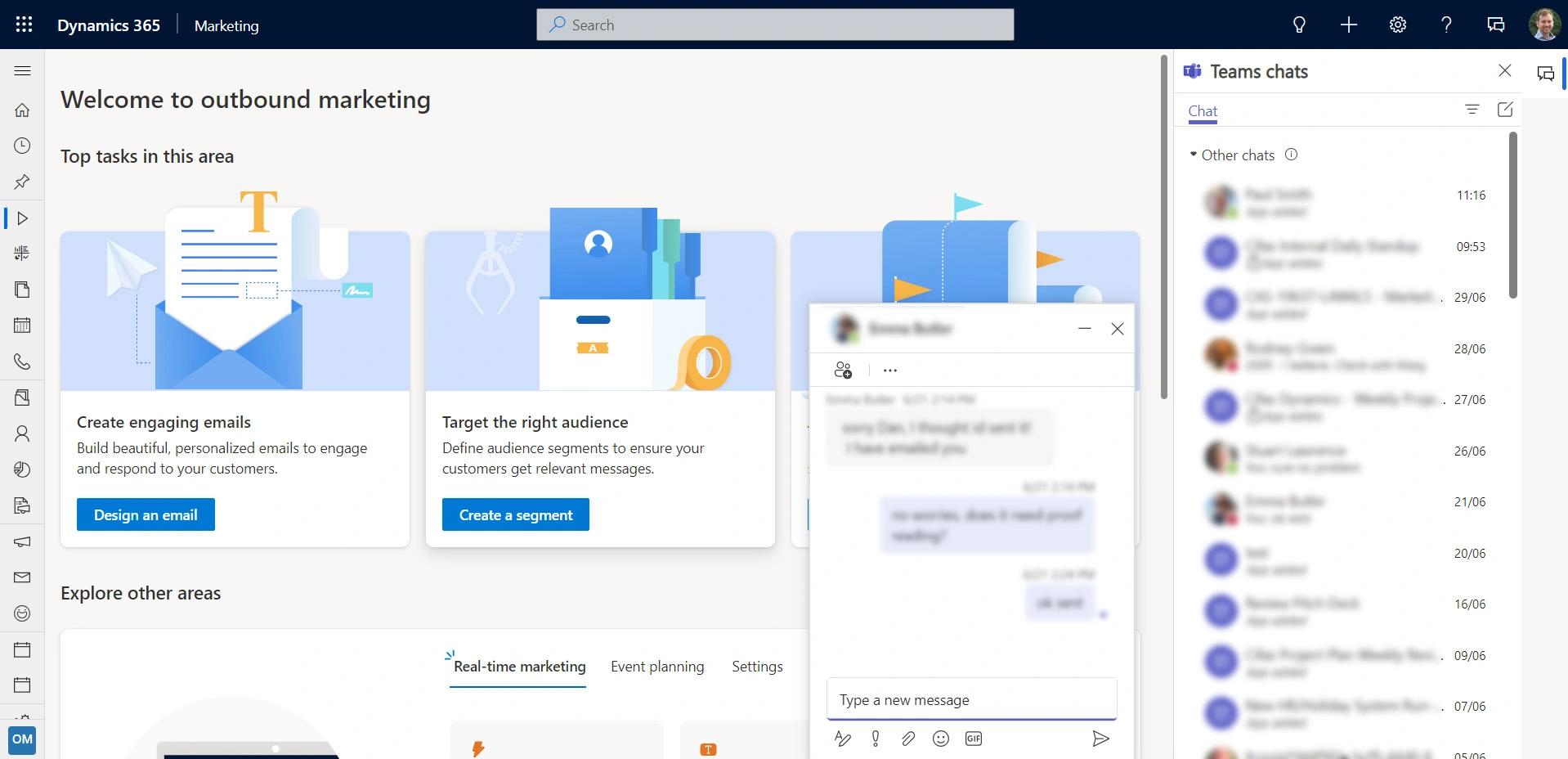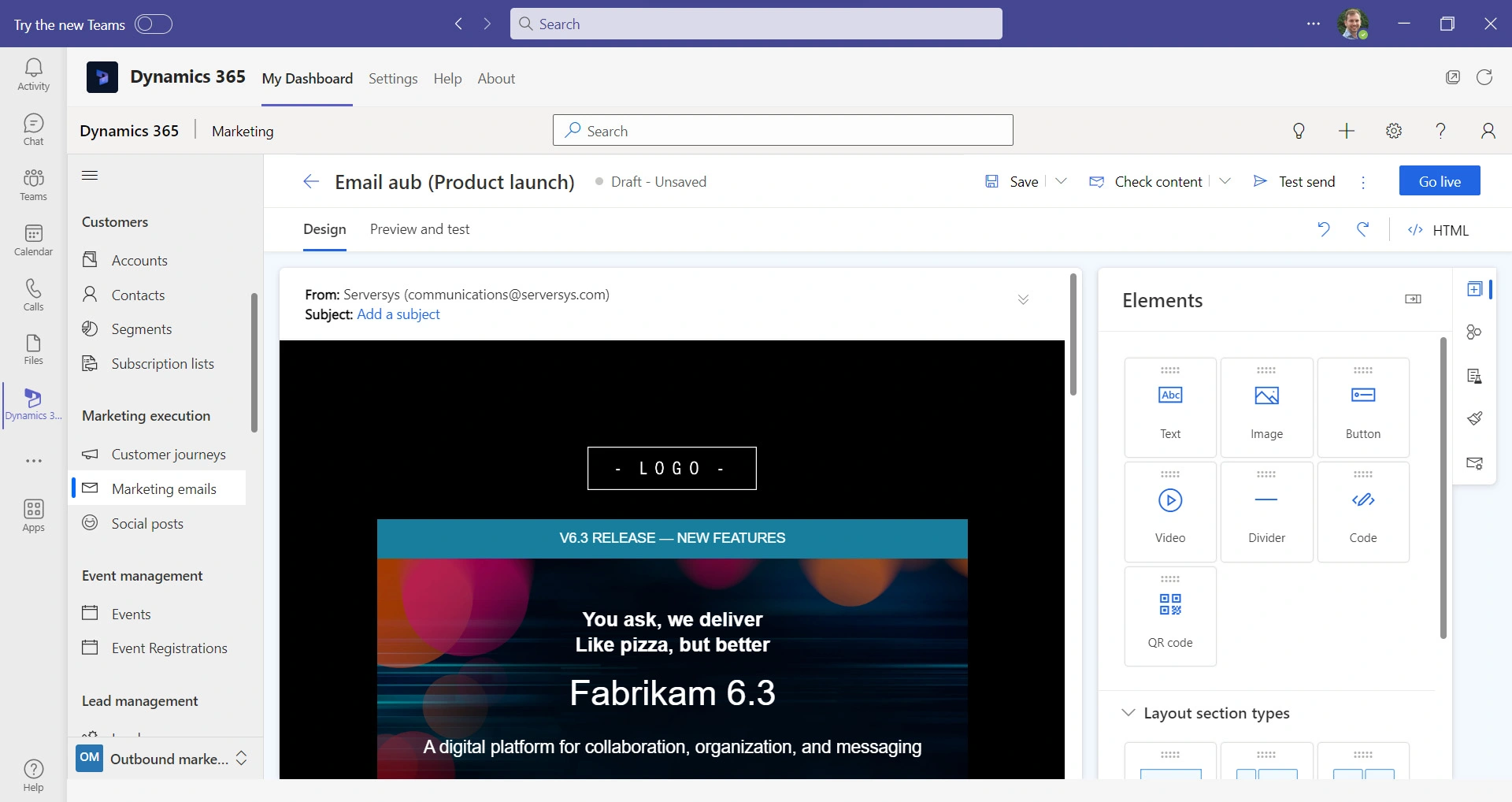Using the native integration between Dynamics 365 and Teams, businesses can enhance teamwork, streamline communication, and foster a collaborative work environment.
This is especially important in an increasingly remote and hybrid working environment. In this article, we will explore the best practices for effectively utilising Teams integration with Dynamics to enhance collaboration and communication.
In this post, we will delve into the enhancements, features, and guidelines for successful implementation.
Understanding Dynamics 365 and Teams Integration
This integration brings together the customer relationship management capabilities of Dynamics 365 with the collaboration and communication features of Microsoft Teams.
With this integration, users can access relevant Dynamics 365 data directly within Teams, initiate conversations around specific records, and share information in real-time. It enables teams to collaborate efficiently, align their efforts, and drive better outcomes.
Key Benefits of Dynamics 365 Teams Integration
The integration of Dynamics 365 with Teams offers numerous benefits for collaboration and communication. Let’s explore some key advantages in more detail:
Centralised communication hub
Teams serves as a hub for communication, enabling team members to connect, share information, and collaborate in real-time. Integration with Dynamics 365 brings customer and business data into the conversation, facilitating contextual discussions and informed decision-making.
Seamless access to Dynamics 365 data
Users can access Dynamics 365 data and insights directly within Teams, eliminating the need to switch between applications. This seamless access to customer information, sales data, service cases, and other relevant data enhances collaboration by providing real-time visibility and fostering data-driven discussions.
Record-level collaboration
Dynamics 365 Teams integration allows users to collaborate around specific records. Team members can have conversations, share documents, and collaborate on tasks related to a particular customer, opportunity, or project. This record-level collaboration ensures that discussions are focused, organised, and tied directly to the relevant context.
Real-time notifications and alerts
Teams integration with Dynamics 365 enables users to receive real-time notifications and alerts within the collaboration platform. For example, when a new lead is assigned in Dynamics 365, team members can receive instant notifications in Teams, allowing them to quickly follow up and collaborate on next steps.
Enhanced productivity and efficiency
By integrating Dynamics 365 with Teams, businesses can streamline workflows, reduce email overload, and improve overall productivity. Team members can communicate, share documents, and collaborate on tasks within a single platform, eliminating the need for back-and-forth communication and enabling efficient collaboration.
Best Practices for Effective Collaboration with Dynamics 365 Teams Integration
To make the most of Dynamics 365 Teams integration and foster effective collaboration within organisations, consider these 8 best practices:
1) Establish clear communication channels:
Define clear channels and teams within Microsoft Teams that align with different projects, departments, or functional areas.
This helps create focused communication spaces and ensures that discussions are organised and visible to the relevant stakeholders.
2) Foster open and transparent communication:
Encourage team members to actively engage in discussions, share updates, and contribute ideas.
Promote a culture of open communication and transparency, allowing all team members to have a voice and participate in collaborative decision-making.
3) Leverage channels for different purposes:
Utilise different channels within Teams for specific purposes. For example, create channels dedicated to sales opportunities, customer service cases, or marketing campaigns. This helps keep discussions focused, allows easy reference to past conversations, and ensures relevant stakeholders are engaged.
4) Utilise @mentions and tagging:
Take advantage of the @mentions feature in Teams to notify specific team members and bring their attention to important discussions or updates.
Use tagging to direct conversations or requests to individuals or groups, ensuring they receive timely notifications and can actively participate in relevant discussions.
5) Share and collaborate on documents:
Use the file-sharing capabilities in Teams to share documents, presentations, and other relevant files related to Dynamics 365 records. This allows team members to collaborate on documents in real-time, provide feedback, and maintain a centralised repository of shared files.
6) Leverage apps and connectors:
Explore and utilise the various apps and connectors available in Teams to extend functionality and enhance collaboration. For example, integrate project management tools, survey tools, or analytics dashboards to streamline workflows, gather feedback, and track progress within Teams.
7) Encourage remote collaboration:
Encourage team members to use the integration to collaborate effectively, share updates, and stay connected regardless of their physical location.
Utilise video calls, screen sharing, and virtual meetings within Teams to facilitate remote collaboration and enhance engagement.
8) Provide training and support:
Ensure team members are trained on the features and capabilities of Dynamics 365 Teams integration.
Offer training sessions, documentation, or video tutorials to familiarise users with the platform and its collaboration tools. Provide ongoing support to address any questions or challenges that may arise.
Measure and optimise collaboration efforts
Regularly evaluate the effectiveness of collaboration efforts enabled by Dynamics 365 Teams integration. Monitor engagement, adoption, and feedback from team members.
Leverage analytics and usage reports available in Teams to gain insights into communication patterns, active channels, and areas that require improvement. Continuously refine collaboration strategies, adjust communication channels as needed, and seek feedback from team members to ensure ongoing optimisation and success.
Teams and Dynamics is a recipe for success
Effective collaboration and communication are critical for positive business outcomes, and integrating Dynamics 365 with Microsoft Teams provides a powerful solution.
By following best practices, such as establishing clear communication channels, fostering transparency, using relevant features, and encouraging remote collaboration, organisations can unlock the full potential of Dynamics and Teams.
This integration streamlines communication, enhances teamwork, and improves overall collaboration within organisations. With seamless access to Dynamics 365 data, record-level collaboration, and real-time notifications, teams can work together more efficiently and make informed decisions.
By embracing these best practices, you can create a collaborative work environment that drives productivity, innovation, and success.




